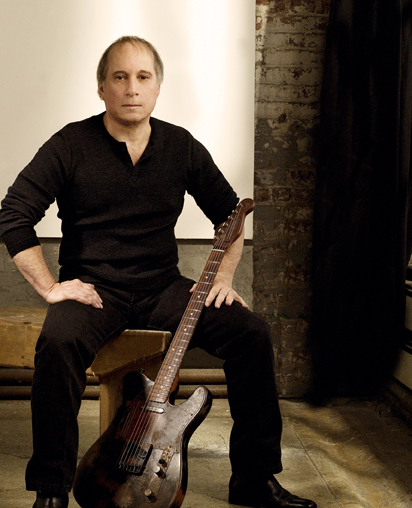Videos by American Songwriter
He told me years ago that he was more interested in what he discovered than what he invented. It seemed like a fine line to draw, so I asked him what the distinction is in his mind between discovery and invention. “You just have no idea that that’s a thought that you had,” he said. “It surprises you. It can make me laugh or make me emotional. When it happens and I’m the audience and I react, I have faith in that because I’m already reacting. I don’t have to question it… But if I make it up, knowing where it’s going, it’s not as much fun. It may be just as good, but it’s more fun to discover it.”
And there, in his words, lies the secret to Simon’s ongoing greatness as a songwriter. Decades beyond the point at which most of his peers stopped looking, Paul Simon is still on a creative journey, still looking for new ways to combine words and music and rhythm and sound to create something new in this world, something that will be as resonant and enriching as the vast body of work he’s already given us. While it seemed he might become the Irving Berlin of his generation, working into his 90s, now Simon, with the release of the extraordinary So Beautiful Or So What, seems more like the Picasso of popular song, an artist perpetually evolving through various stages of creativity, forever challenging himself and us in the process, and seeming to enjoy the act of creation now as much as ever.
Simon, of course, has busted precedents for years. Back in the ‘80s – some two decades beyond his first flush of success with Simon & Garfunkel and long past the point at which most of his peers peaked creatively – he created Graceland, a masterpiece of songwriting and record-making that changed the shape of popular songwriting, making new musical connections in the world which forever shifted the idea of what a song can do. Not content to repeat himself in any regard – in terms of his writing or the production which surrounds his songs – he fused formerly disparate elements – African-influenced music with American thoughts – and came up with one of the most engaging albums of all time. He followed it with subsequent masterpieces, including The Rhythm Of The Saints and Surprise, a collaboration with Brian Eno. All of these albums were created with a method that was the flipside of his former songwriting technique, in which he’d write with an acoustic guitar and a yellow legal pad. From Graceland on, he’d make a rhythm track first – often based on jams he recorded with his friend and fellow producer Roy Halee around the world from Brazil to Africa and beyond – and write songs to the track. It was a bold move for this guy who was already considered one of the great American masters of songwriting. But as always, it was a voyage of discovery for him, and he reached a new hybrid of lyrical and rhythmic genius that has impacted popular music as much, if not more, as his landmark work with Art Garfunkel. Here, the guy who was known as one of the most serious and even dour songwriters around was creating funny, joyous music – but without sacrificing his level of intelligence. Singlehandedly, he brought songs to a new place, through one of the most substantial evolutions in the form in decades. “It wasn’t until Graceland,” he said, “where [my writing] was sophisticated and simple at the same time… And that’s an objective. Try and do that. Try to simplify and simplify without losing what was really interesting.”
And now comes a new chapter in the voluminous Paul Simon songbook. Just as he embraces conflicting ideas often in songs, he often reverses his ideas about how to approach his art. After creating the stunning Surprise, a remarkable sonic collaboration with Eno which effortlessly combined the new palette of digital recording with real-time instruments, he took a break from songwriting, and gradually eased back into his old method of writing songs with a guitar. The result is an astounding and beautiful album, one that weaves together elements from all his musical journeys while moving into new territory, that of found voices and loops. And so we have both the intoxicating rhythms of recent works with a return to acoustic guitar-based songs ripe with some of his most poignant melodicism in years, luminous harmonies, and even a dazzling guitar instrumental, “Amulet.” There’s also tracks which seamlessly fuse Indian percussion with bluegrass, but all into a gumbo which is uniquely Simon. All of which reveals that his journey is boundless, as he’s exploded through every limit imposed on musical artists, such as age, genre, and even immense success (a hard hurdle for many to clear), and continues to amaze.
But how has he done it? How can someone who has been to the summit of the songwriting mountain several times continue to do great work? He answered that often it’s the journey itself, even more than reaching the destination, that matters, and perhaps it’s this understanding that propels him. “I just keep going to whatever it is that interests me,” he said. “But the experiment, the investigation, is important… What you find is what it is you are always interested in.” Later he added, “I mean, writing songs is what I do and I enjoy it. I’m grateful that people are still interested after all this time. That I can keep doing it… I’ve been interested in writing songs and making records since I was thirteen years old. And I’m still absolutely enthralled with it.”

Thanks for writing such an easy-to-understand arcltie on this topic.